You’ll find advanced running watches like the LG G Watch and Samsung Galaxy models that use built-in gait recognition for passive authentication security. These devices combine accelerometer data with multi-sensor fusion technology, integrating fingerprint and heart rate patterns to reduce error rates to just 0.06%. They feature Bluetooth Low Energy transmission with end-to-end encryption and ZEMFA protocols for zero-effort multi-factor authentication. Continuous monitoring systems analyze your unique walking patterns for robust protection against spoofing while maintaining seamless user experience throughout your activities.
Android-Based Smart Running Watches With Built-In Gait Recognition Technology

While traditional security methods like PINs and fingerprints require deliberate user action, Android-based smart running watches with built-in gait recognition technology offer continuous, passive authentication through your natural walking patterns.
Popular models like LG G Watch and Samsung Galaxy watches utilize onboard accelerometers to capture your unique motion data. The Android Wear subsystem maintains consistent wrist orientation, ensuring reliable gait data collection compared to smartphones that constantly shift positions.
Your smartwatch transmits this biometric data via Bluetooth to paired devices or servers for real-time processing. Machine learning algorithms analyze your accelerometer readings to create personalized authentication models that distinguish your walking patterns from others. Advanced footpods with 500Hz sampling rates can provide even more precise gait analysis data for enhanced security applications.
This mobility-based security operates seamlessly in the background, providing enhanced protection for your fitness data and personal information without interrupting your activities.
Multi-Sensor Fusion Capabilities for Enhanced Biometric Authentication Accuracy
As security threats become more sophisticated, your running watch’s authentication accuracy markedly improves when multiple biometric sensors work together rather than relying on gait recognition alone.
Multi-sensor fusion combines data from various biometric modalities like fingerprint, heart rate patterns, and gait analysis to create a robust authentication system.
Multiple biometric sensors working together create significantly stronger authentication than any single sensor could achieve alone.
You’ll experience considerably fewer false rejections since fusion systems reduce error rates from over 1% to as low as 0.06%. Your watch becomes exponentially harder to spoof when attackers must simultaneously deceive multiple biometric sensors rather than just one.
The system adapts to your specific conditions by dynamically weighting sensor reliability based on environmental factors. When one sensor temporarily fails or produces degraded samples, others compensate automatically, ensuring consistent access to your device without authentication frustration.
The biometric authentication approach provides a usernameless and passwordless experience that simplifies access while maintaining high security standards.
Bluetooth and Internet Connectivity Features for Secure Data Transmission
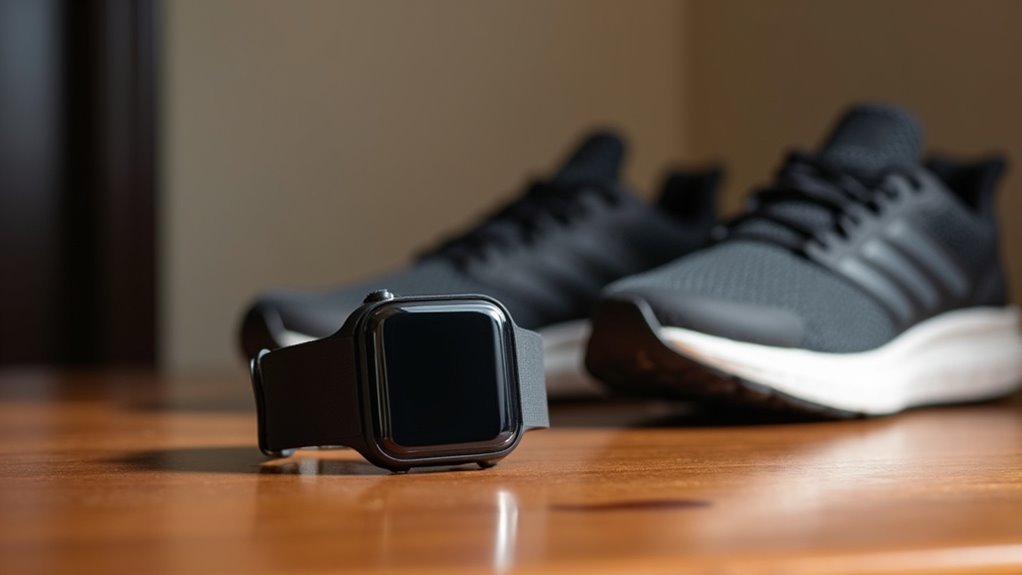
Your running watch’s sophisticated biometric authentication system depends on secure connectivity protocols to transmit gait data and verification results between devices.
Bluetooth Low Energy serves as your primary data link, pairing directly with your smartphone while conserving battery life through efficient wireless communication. The connection uses standard encryption protocols and authentication handshakes to prevent unauthorized access during each session.
When you need real-time services, Wi-Fi or LTE connectivity enables instant synchronization with cloud platforms like Strava.
Your device implements end-to-end encryption for proprietary apps and complies with GDPR regulations for international deployment. You’ll receive pairing notifications and confirmation codes on both devices to prevent man-in-the-middle attacks, while cloud backups remain encrypted and accessible only through your verified credentials. Modern running watches achieve remarkable battery efficiency lasting up to 35 hours in continuous GPS tracking mode while maintaining secure connectivity protocols.
Multi-Factor Authentication Integration With ZEMFA Security Protocols
Beyond traditional password-based security, your running watch implements ZEMFA (Zero-Effort Multi-Factor Authentication) protocols that seamlessly combine gait biometrics with additional verification layers.
This passive authentication system analyzes your unique walking patterns alongside data from your smartphone, creating a multi-device verification approach that’s nearly impossible to replicate.
ZEMFA’s behavioral biometrics focus on your natural arm movements and stride characteristics, which remain consistent yet difficult for attackers to mimic.
The protocol resists active attacks by requiring synchronized data from multiple sensors across devices.
You’ll experience enhanced security without additional effort, as the system continuously authenticates your identity through normal movement patterns.
This multi-modal approach greatly reduces vulnerability while maintaining user-friendly operation, making your device more secure without compromising convenience. The orchestrator device manages authentication flows between your watch and other wearable devices, ensuring secure coordination of biometric data verification across your entire ecosystem.
Continuous Monitoring Systems for Real-Time Gait Pattern Verification
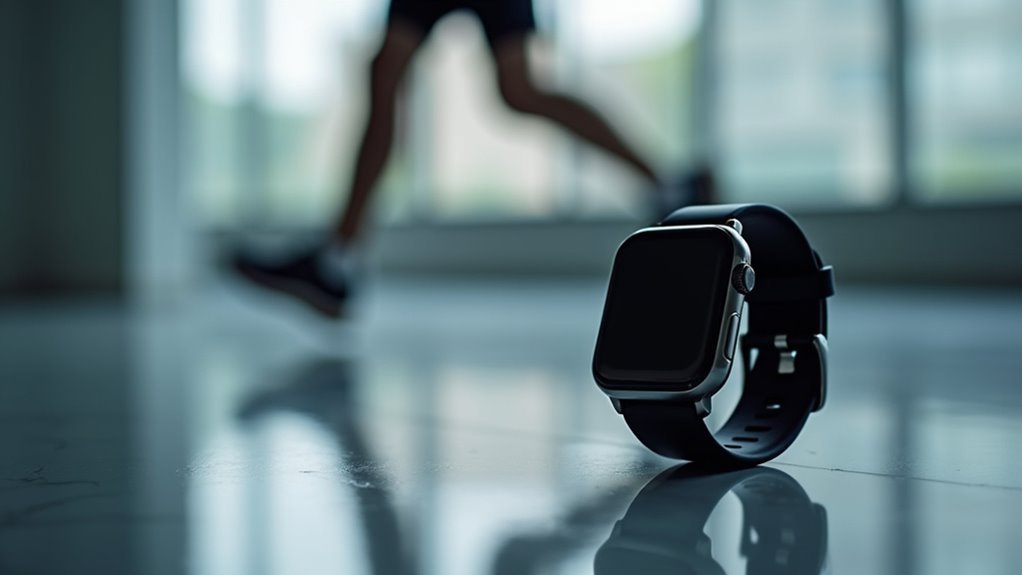
While traditional authentication methods require deliberate user action, continuous monitoring systems in running watches work silently in the background, analyzing your gait patterns through embedded accelerometers and gyroscopes that capture every subtle movement.
These systems employ advanced algorithms like bidirectional LSTM models to achieve real-time gait phase estimation with over 90% accuracy, maintaining consistent performance across diverse terrains from paved roads to stairs.
Your device continuously verifies your identity without interrupting your workout, creating a seamless security experience.
When the system detects gait anomalies that deviate from your registered patterns, it instantly triggers security protocols or alerts.
This non-intrusive approach provides robust protection against spoofing attempts while enabling real-time anomaly detection, making your running watch both more secure and user-friendly. The behavioral traits captured through gait analysis complement other biometric authentication methods by focusing on how you move rather than physical characteristics.
Frequently Asked Questions
How Long Does the Battery Last When Gait Authentication Is Continuously Running?
Continuously running gait authentication reduces your GPS watch’s battery life by approximately 10-20% compared to standard usage. You’ll typically get 25-80 hours depending on your specific model and power settings.
Can Gait Authentication Work if I Have a Walking Injury or Disability?
Walking injuries or disabilities can greatly alter your gait patterns, making authentication less accurate. Current devices aren’t fully validated for atypical gaits, though researchers are developing adaptive algorithms to accommodate diverse walking patterns.
What Happens to My Gait Data if I Lose My Running Watch?
Your gait data stays on the lost device and potentially synced cloud servers. You should immediately trigger remote wipe features if available to prevent unauthorized access to your unique biometric information.
Does Gait Authentication Work During Different Types of Exercise Besides Running?
Gait authentication works best during rhythmic activities like walking and jogging, but it’s less effective during cycling, swimming, or high-intensity exercises where your movement patterns change considerably from normal walking gaits.
How Much Does a Running Watch With Gait Authentication Typically Cost?
You’ll typically pay between $200 and $1,000 for running watches with gait authentication. Entry-level models start around $100 but lack advanced features, while high-end options with full authentication cost $500 or more.
In Summary
You’ll find these five running watches revolutionize your workout security through advanced gait authentication technology. They’re equipped with Android-based systems that’ll continuously monitor your unique movement patterns while you’re exercising. You can’t overlook their multi-sensor fusion capabilities and ZEMFA protocols that’ll safeguard your personal data during Bluetooth transmissions. These devices won’t just track your fitness metrics—they’ll guarantee you’re the only one accessing your sensitive health information through real-time biometric verification.

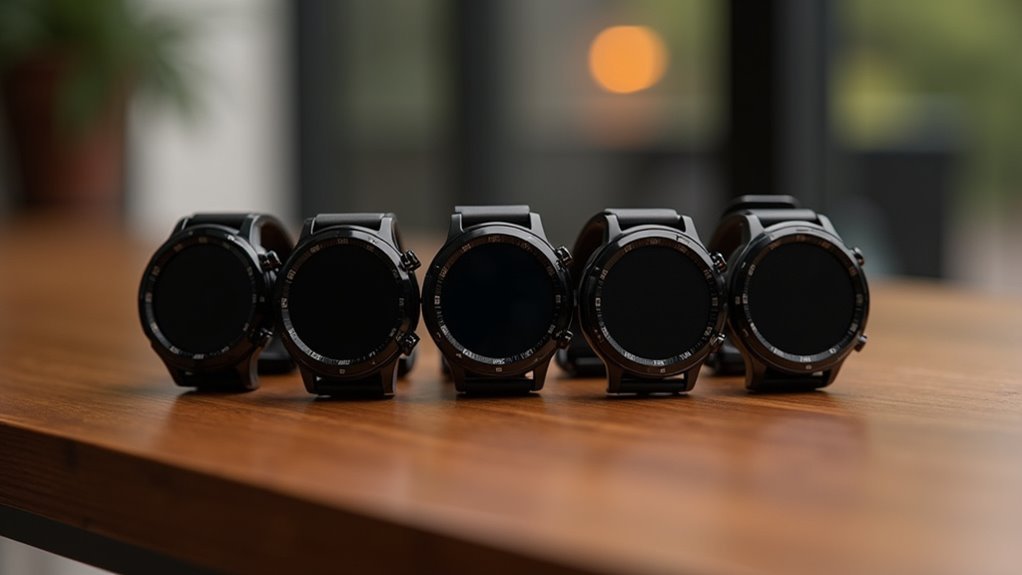
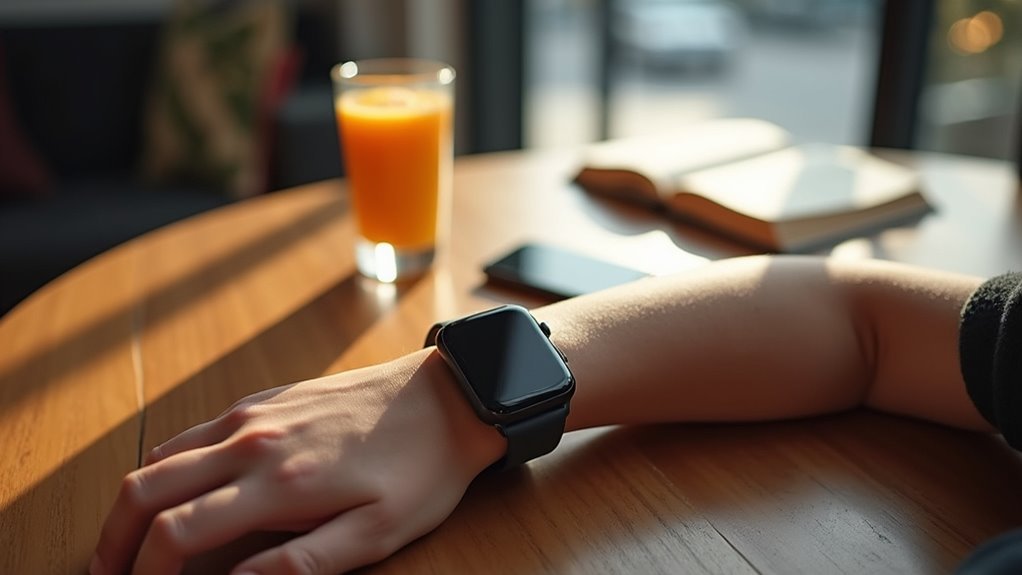
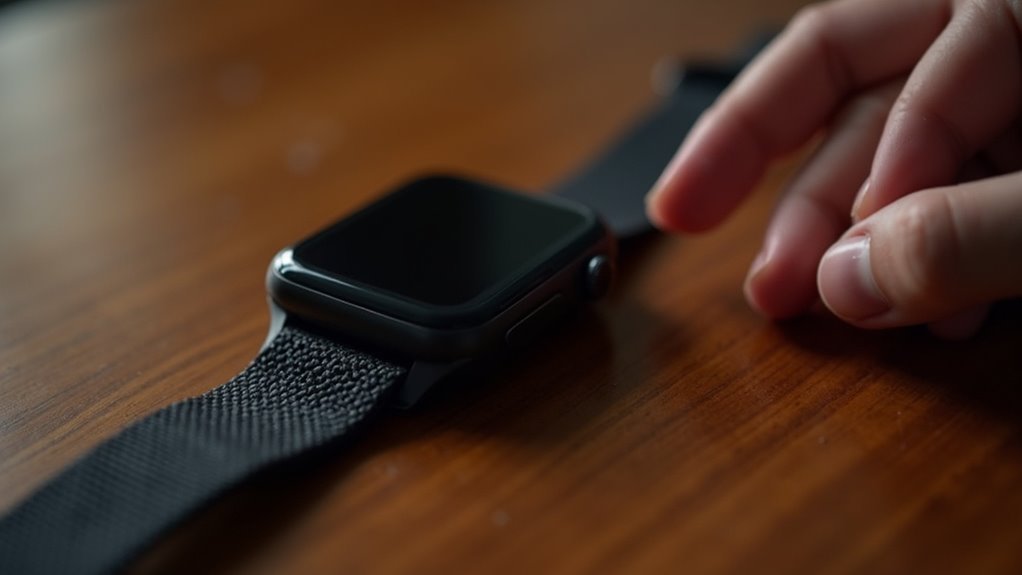

Leave a Reply